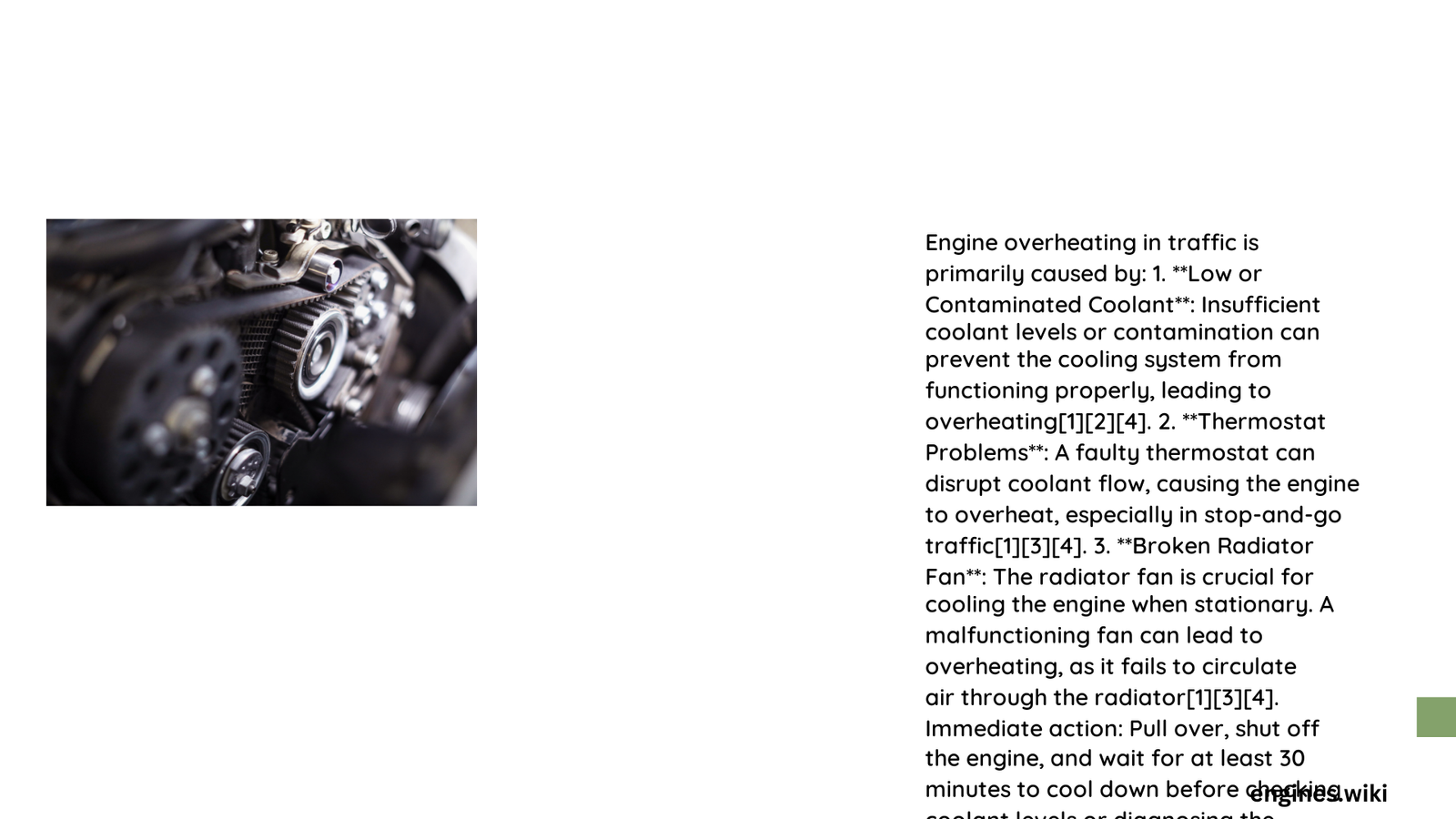Engine overheating in traffic represents a critical challenge for drivers, transforming a routine commute into a potential mechanical disaster. When vehicles become trapped in stop-and-go conditions, multiple thermal dynamics converge, creating a perfect storm of temperature escalation that can compromise engine integrity. Understanding these complex interactions becomes paramount for preventing costly mechanical failures and ensuring safe transportation.
What Triggers Engine Overheating During Traffic Congestion?
Root Causes of Temperature Elevation
Engine overheating in traffic emerges from several interconnected factors:
- Airflow Restriction
- Minimal vehicle movement reduces cooling system efficiency
- Radiator receives insufficient air circulation
-
Heat accumulates rapidly without natural cooling mechanisms
-
Mechanical System Vulnerabilities
- Compromised coolant circulation
- Degraded water pump performance
- Potential radiator blockages
| Condition | Temperature Impact | Risk Level |
|---|---|---|
| Idle State | High Heat Retention | Extreme |
| Limited Movement | Reduced Cooling | High |
| AC Usage | Additional Thermal Load | Moderate |
How Does Traffic Complexity Influence Engine Temperature?
Traffic conditions dramatically influence thermal management:
- Urban Environments: Frequent stops increase heat generation
- Highway Congestion: Prolonged idling accelerates temperature rise
- Summer Conditions: Ambient temperature amplifies cooling challenges
What Immediate Actions Protect Your Engine?
Critical Response Strategies
When temperature indicators signal potential overheating:
- Immediate Pullover: Stop in a safe location
- Engine Shutdown: Prevent further heat accumulation
- Temperature Assessment: Allow cooling before inspection
- Professional Consultation: Seek mechanical evaluation
Prevention: Proactive Maintenance Techniques
Comprehensive Cooling System Management
- Regular coolant level checks
- Annual radiator system inspection
- Consistent fluid quality maintenance
- Timely component replacement
Technical Diagnostic Insights
Temperature Threshold Indicators:
– Normal Range: 195°F – 220°F
– Warning Zone: Above 220°F
– Critical Point: Sustained temperatures exceeding 230°F
Advanced Thermal Management Strategies
Technological Interventions
- Smart Cooling Systems
- Advanced temperature sensors
- Predictive thermal management
- Automated cooling adjustments
Vehicle-Specific Considerations
Different vehicle types experience unique thermal challenges:
– Compact Cars: Faster heat accumulation
– SUVs: More robust cooling systems
– Electric Vehicles: Alternative thermal management
Professional Maintenance Recommendations
- Quarterly cooling system diagnostics
- Use manufacturer-recommended coolant
- Address minor leaks immediately
- Monitor temperature gauge consistently
Technological Evolution in Cooling Systems
Modern vehicles incorporate sophisticated thermal management technologies, including:
– Enhanced radiator designs
– Intelligent fan control
– Advanced heat dissipation materials
Economic Impact of Thermal Management
Proactive maintenance can:
– Reduce repair costs by 60%
– Extend engine lifespan
– Improve overall vehicle performance
Conclusion
Understanding engine overheating in traffic requires comprehensive knowledge of thermal dynamics, mechanical systems, and proactive maintenance strategies. By implementing systematic approaches and remaining vigilant, drivers can effectively mitigate risks associated with temperature escalation.
References:
– Society of Automotive Engineers
– National Institute of Automotive Service Excellence
– Automotive Maintenance Technical Guidelines

